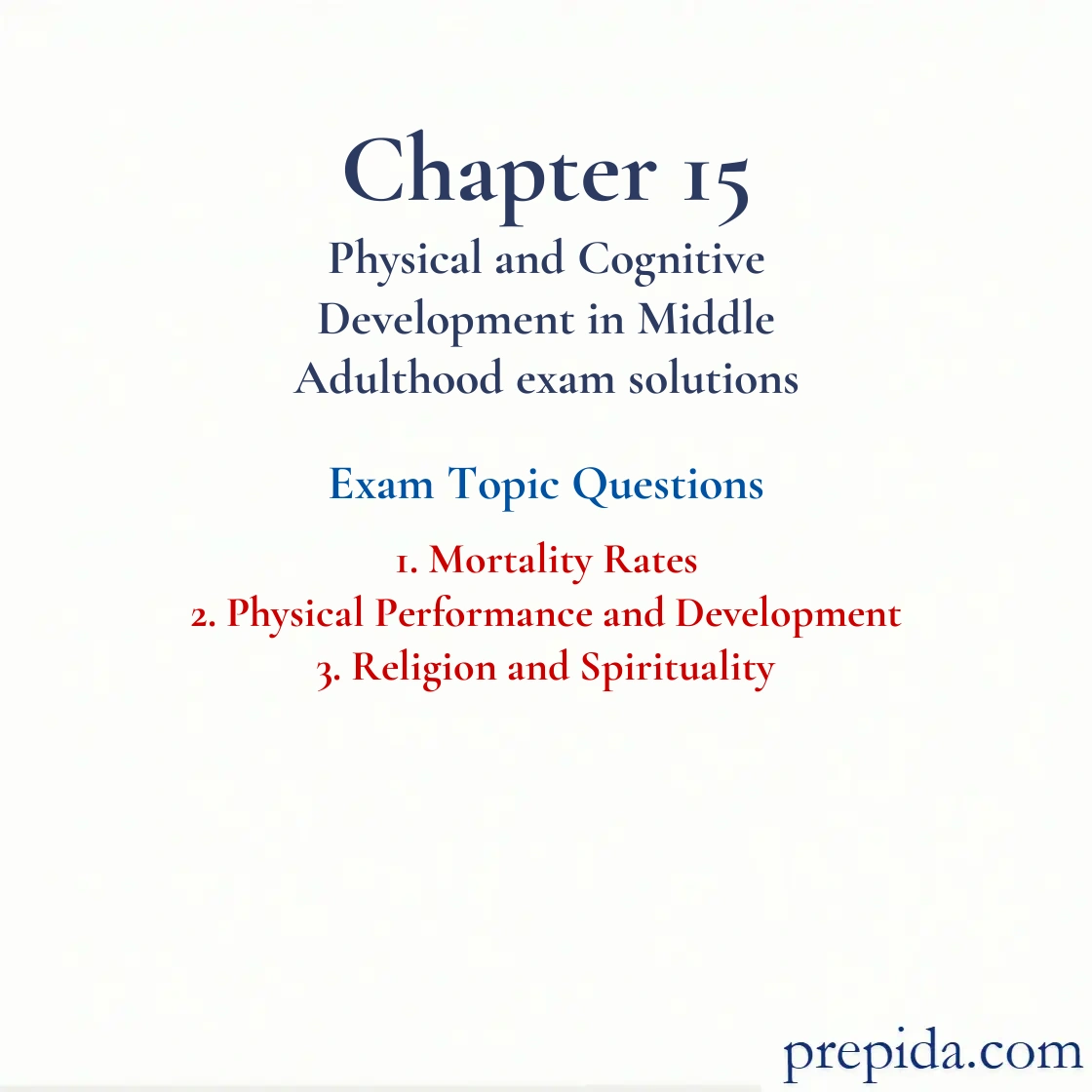
At present, the main causes of death in middle adulthood in the United States are
- infectious diseases.
- accidents.
- chronic diseases.
- homicide.
Chronic Disorders: Disorders that are characterized by slow onset and long duration. They are rare in early adulthood, increase during middle adulthood, and become common in late adulthood.
________ was the main cause of death in the United States until the middle of the 20th century.
- Infectious disease
- Accident
- Chronic disease
- Homicide
Which of the following statements is true of mortality rates in the United States and the world?
- The least number of deaths in the 20th century were due to infectious diseases.
- The rates of chronic disorders have decreased and the rate of infectious diseases have increased.
- In old age, many deaths are caused by a single, readily identifiable condition.
- Men usually have higher mortality rates than women for all of the leading causes of death.
Life Expectancy: The number of years that will probably be lived by the average person born in a particular year.
Age-related loss of muscle strength is especially marked in
- the upper arms.
- the back and legs.
- the jaw and face.
- the chest and abdomen.
Limbic System: The part of the brain where emotions and rewards are processed.
As an orthopedic surgeon, Carla is advising her patient who is in his mid-20s to make some changes to his diet and include exercises in his daily routine as that would ensure his bone density is normal. Which of the following statements, if true, best supports her advice?
- Peak functioning of the body's joints usually occurs in the 30s.
- By the end of midlife, bones break more easily and heal more slowly.
- Maximum bone density occurs by the mid- to late 20s.
- The rate of bone density loss decelerates in the 50s.
Osteoporosis: A chronic condition that involves an extensive loss of bone tissue and is the main reason many older adults walk with a marked stoop.
Mark is an orthopedic surgeon. He has been asked to conduct a seminar for middle-aged individuals on bone density. During the seminar, he informs the audience that they should include a lot of fruits and vegetables in their diet as they are known to increase bone density in middle-aged and older adults. Which of the following facts best supports Mark's advice?
- Maximum bone density occurs in late adolescence.
- Maximum bone density occurs by the mid- to late 30s.
- Peak functioning of the body's joints occurs in the 50s.
- The rate of bone density loss accelerates and then decelerates with further aging.
Osteoporosis: A chronic condition that involves an extensive loss of bone tissue and is the main reason many older adults walk with a marked stoop.
James is in his mid-40s and has little time to exercise as he runs a business. However, he knows that he should focus more on his health, eat healthy meals at regular intervals, and exercise as often as he can. One of the age-related conditions that James is most likely to face at his age is
- increased strength in his upper arms.
- sensitivity to high-pitched sounds.
- joint stiffness.
- decreased bladder control.
Arthritis: Inflammation of the joints accompanied by pain, stiffness, and movement problems; this disease is especially common in older adults.
Mildred is in her 20s. Her doctor tells her that she is gradually losing muscle mass and strength especially in her back and legs. Her doctor has advised her to exercise regularly and focus on her diet as a strategy to slow down the decline of muscle mass and strength. Which of the following terms best describes Mildred's condition?
- sarcoma
- osteopenia
- osteoporosis
- sarcopenia
Which of the following statements is true of the physical changes in bones?
- Maximum bone density occurs in late adolescence.
- By the end of early adulthood, bones break more easily and heal more slowly.
- The rate of bone loss is steady throughout the life span.
- Women lose bone mass twice as fast as men do.
Osteoporosis: A chronic condition that involves an extensive loss of bone tissue and is the main reason many older adults walk with a marked stoop.
Which of the following statements is true of spirituality?
- Only a small minority of U.S. adults consider themselves to be religious.
- Most U.S. middle-aged adults do not consider spirituality a major part of their lives.
- There is no evidence of changes in spirituality and religiousness in people as they age.
- Women have consistently shown a stronger interest in religion and spirituality than men have.
Religion: An organized set of beliefs, practices, rituals, and symbols that increases an individual’s connection to a sacred or transcendent other (God, higher power, or higher truth).
A longitudinal study of individuals from their early 30s through their late 60s/early 70s showed that
- a significant increase in spirituality occurred between late middle and late adulthood.
- spirituality peaked in late middle adulthood.
- there was no significant change in spirituality from late middle to late adulthood.
- a dramatic decrease in spirituality occurred between late middle and late adulthood.
Spirituality: Experiencing something beyond oneself in a transcendent manner and living in a way that benefits others and society.